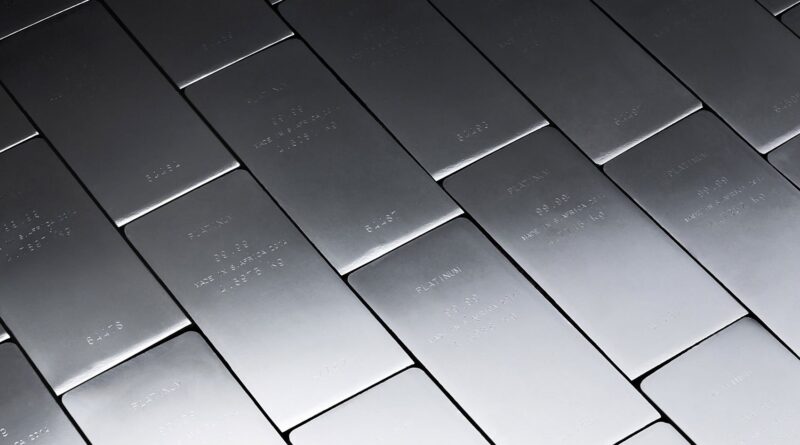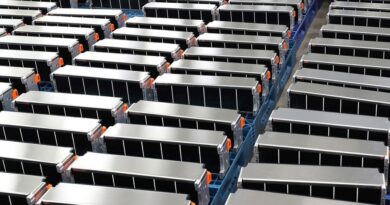Implats reports on Platinum Group Metal markets
In the 2021 calendar year, a moderation in investment demand is likely to result in the platinum market returning to surplus. The supply impact of the release of in-process inventory by South African producers will be compounded by the demand impact of the global semi-conductor chip shortage on automotive production.
In the case of palladium, reduced Russian supply should result in a persistent, but moderated deficit while in rhodium, a more balanced market in 2021 is expected before demand growth in 2022 results in continued market tightness and a fundamental deficit
PLATINUM
• Near-term industrial surpluses and moderation in expected investment demand after elevated exchange-traded fund (ETF) inflows and bar and coin purchases in 2019 and 2020
• Medium-term tightening with limited primary and secondary supply growth, robust industrial demand and rising automotive offtake due to switching for palladium in gasoline catalysts and tightening heavy-duty emission standards, and longer-term support from the development of the hydrogen economy.
• A well-diversified suite of polymetallic orebodies has buffered Implats from the impact of low platinum pricing
• Low-cost, quick to market growth will increase Implats’ exposure to platinum in the medium term, allowing the Group to benefit from future expected market tightness.
PALLADIUM
• The semi-conductor chip shortage has eased demand projections in 2021, with destocking by South African producers offsetting the impact of production interruptions at a major Russian mining company. Physical markets remain tight, compounded by renewed investment activity with purchases by ETF investors
• Rising primary and secondary supply in the long term, together with metal optimisation in catalyst formulations and a rising battery-powered electric vehicle market share, will likely result in easing market tightness.
• Focus on investment to optimise assets with high palladium ore content and drive efficiency gains to offset the impact of potential softening in medium-term pricing
• Targeted market development to secure demand drivers for palladium in the medium to longer term.
RHODIUM
• Short-term softness will result from the easing of automotive purchasing ahead of production revisions due to the chip shortage, together with funding constraints and accelerated refined supply on destocking of accumulated in-process inventory by South African producers
• Material tightening of the market in the medium term on negligible primary supply growth and benign recycling growth, together with tightening NOx standards and rising annual vehicle production.
• Record rhodium pricing and Implats’ high production exposure relative to the peer group creates financial flexibility to proactively invest in asset integrity and infrastructure across the Group portfolio, ensuring the sustainability and longevity of high-rhodium content operations
• Targeted market development to soften market tightness and create sustainable demand patterns for all three primary metals results in increased focus on rhodium in the medium term
PGMs SHAPE THE WORLD
We supply the platinum group metals (PGMs) needed to develop, sustain and improve our world. Our metals touch lives every day, and they play an important role in creating a better future through:
• Connecting people through hard drives, smart phones, computer screens and transportation • Saving lives by their use in cancer treatments, pacemakers and airbags
• Greening the world through their efficacy in fuel cells, autocatalysts and clean water technologies
• Growing wealth via investments in bars, coins and jewellery, derivatives, ETFs and shares
• Celebrating life through their use in jewellery, clothing, lipstick, paint and food preservation.
FUTURE-FOCUSSED AND RECYCLABLE
PGMs will be central to our future choices – from power generation, to transport, healthcare and communication. These metals’ unique catalytic, chemical and physical properties underpin the development of new uses and innovative applications of existing uses. A major focus for current PGM innovation and development stems from the global imperative to decarbonise, reduce emissions and create a “hydrogen revolution”.
It is now estimated that green hydrogen could supply up to 25% of the world’s energy needs and become a US$10-trillion market by 2050. Implats is proud to be at the forefront of technology developments related to the hydrogen economy via research and development of fuel cells and our investment in AP Ventures.
Through fuel cells, green hydrogen enables zero-emission mobility. Using hydrogen for heat can enable the decarbonisation of industries such as steel and cement manufacturing, which currently rely on hydrocarbon fuels. PGMs continue to be at the forefront of medical innovation too. They are used in developing artificial kidneys, for example, and in sophisticated and less invasive clot-retrieval techniques in the treatment of strokes and aneurysms.
They have been actively employed during Covid-19, used in instruments that read blood gas composition, which is a vital diagnostic tool for healthcare professionals treating respiratory issues. PGMs are uniquely durable and can be used efficiently. They are used rather than consumed – their high recyclability means they can be re-used many times, reducing their impact on the environment.
When recycled, more than 96% are recovered, giving them a long lifecycle. In addition to their environment-focussed applications, this aids the role PGMs play in protecting the environment by reducing the negative impacts associated with metal waste disposal.
UNIQUE AND RARE METALS
The PGMs Implats produces include platinum, palladium, rhodium, ruthenium and iridium. PGMs are an excellent raw material, catalyst and manufacturing ingredient due to their unique chemical and physical properties. These metals are the heartbeat of our everyday lives. One in four goods manufactured today either contain PGMs or had PGMs play a key role in their manufacture – from silicone to aircraft turbines, from anti-cancer drugs to investment jewellery and mobile phones, from catalytic converters for automobiles to electrochlorination systems and ceramic glazes.
Platinum (Pt) is one of the rarest metals, occurring at very low concentrations in the Earth’s crust. It is 30 times rarer than gold and both an essential and precious metal. With iridium and osmium, it is among the densest material known – platinum is almost twice as dense as lead and 11% denser than gold. It’s natural white lustre means it is best known for its use in jewellery. But this represents only about 40% of its overall platinum use, with 37% used for catalytic converters, and the remaining proportion used in other industrial applications.
Palladium (Pd) is the second most abundant of the PGMs, has the lowest melting point of all PGMs, and is the least dense. It’s most remarkable quality is its ability to absorb 900 times its own volume of hydrogen at room temperature, making palladium an efficient and safe hydrogen storage medium and purifier. It is chemically stable with good electrical conductivity, making it a more effective and durable plating material in electronics relative to gold.
Rhodium (Rh), a cool-grey colour, is the third most found of the PGMs. It is extremely hard, making it an excellent alloying agent when added to platinum. Like platinum and palladium, it is a vital component in industrial catalytic systems – three-way catalysts for gasoline engines use rhodium to catalyse the reduction of nitrogen oxides to nitrogen. Rhodium is key to many industrial processes, such as glass and glass fibre production, because of it high melting point, high temperature stability and resistance to corrosion.
Iridium (Ir) is white with a faint yellow hue, and the rarest of the PGMs. Four times harder than platinum it is used in high-temperature equipment, such as the crucibles used to grow crystals for laser technology, because of its high melting point and temperature stability. It is highly biologically compatible, making it ideal for use in medical and surgical applications ranging from cancer combatting technologies, Parkinson’s disease, heart conditions, deafness and blindness. This shiny metal adds brilliance to jewellery and its resistance to corrosion makes it versatile in industrial applications and chemical production.
Ruthenium (Ru) stays hard and brittle at temperatures as high as 1500°C, making it difficult to work, but useful in imparting hardness in jewellery alloys and improving resistance to abrasion on electrical contact surfaces. This cool-white metal is invaluable to the electronics and chemicals industries, due to its electrical and electrochemical profile, good catalytic properties and activity, its resistance to corrosion and its all-round stability. Ruthenium shows promise in alloys for aircraft turbine blades, which will help reduce the CO2 impact of air travel on the environment, and in gas-toliquids technology.




